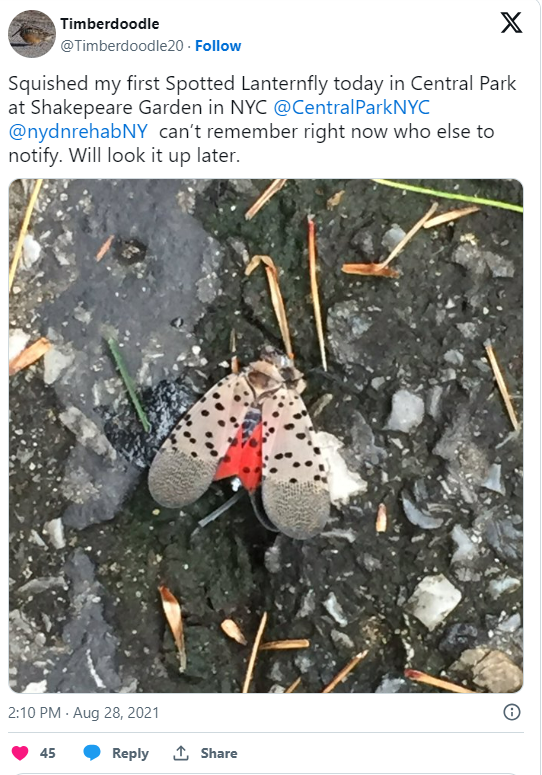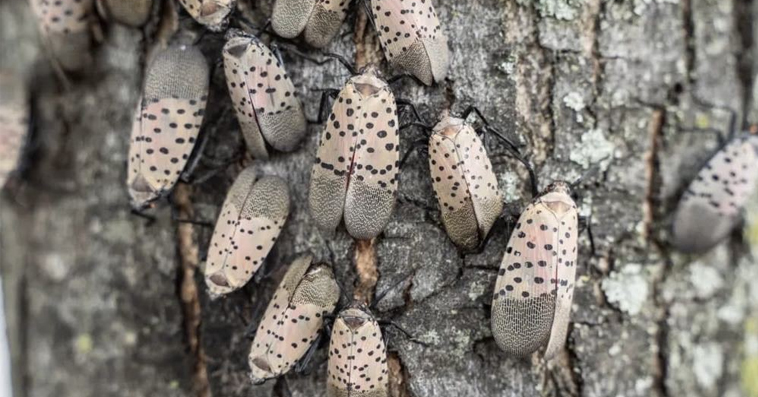People are fighting a terrifying monster that wants to destroy everything it comes into contact with throughout the eastern United States.
Though they seem innocuous, spotted lanternflies are extremely invasive insects, so treat them with extreme caution if you come across one.
To find out more about the pest you need to eradicate, continue reading!
Searching for “lanternfly” on social media will bring up a number of posts from users who have shared their kills of these Chinese native insects, which begin mating in late summer.

Social media celebrity Marques Brownlee, from New Jersey, writes, “Run over by my car because apparently this lanternfly is a horribly invasive species and everyone should be murdering them.”
An further user expresses his satisfaction with his latest kills: “While strolling, I observed a spotted lanternfly. STOMP. Hooray! Oh, another one, ten feet away. STOMP. Happy!

He adds a picture of a group of nymphs on a tree and writes, “A few feet further on… Oh no.
The spotted lanternfly
Lycorma delicatula, often known as the spotted lanternfly, is an invasive insect that presents serious risks to the environment and the economy.

It initially arrived in Pennsylvania in 2014, and since then, it has expanded to other regions of North America. It kills plants over time by feeding on hardwoods like maple and walnut trees as well as fruit trees (apple, cherry, or grape).
In addition, they yield a sticky material known as honeydew, which can exacerbate plant damage by fostering the growth of sooty mold.
How do they appear?
About 30 to 50 eggs are laid in a pile that resembles mud and is coated with wax throughout the late summer and early fall. Over time, these aggregates darken from their initial light gray to brownish color.

The nymphs are initially black with white spots upon hatching, but as they become larger, they change to a vibrant scarlet color with black borders and white specks.
When they mature, lanternflies have grayish forewings speckled with black and measure about one inch in length. Their underwings are crimson, dotted with black and surrounded by white.
By puncturing plant tissues with their needle-like mouthparts, they consume plant sap. When plants are fed in large quantities, it can weaken and even kill them.
Effects on Agriculture and Ecosystems
Economic Damage: Hardwoods and fruit crops including grapes, apples, and peaches are particularly vulnerable to harm from the spotted lanternfly. Plants that are actively being fed are weakened, and this might result in large yield losses.
Beyond agriculture, the lanternfly has the potential to upset regional ecosystems. It can change plant communities and have an impact on animals that depend on those plants by grazing on a range of plants.
Crush and scrape
Due to their rapid proliferation and plant-damaging abilities, spotted lanternflies require a combination of approaches for control and elimination.
The following are some practical methods for controlling and getting rid of these pests:
Egg Masses: Remove egg masses with a scraper from exterior surfaces such as fences and tree trunks. After that, put the mass in a sealed bag with sanitizer or alcohol and throw it away.
Adults and Nymphs: When you see nymphs or adults, crush them. You can use your hands, your feet, or an instrument like a broom to smash it. Wear gloves if possible to prevent direct contact.
To stop spotted lanternflies from spreading to other locations, abide by all rules if you’re in a quarantined area.

To support wider control efforts, report sightings to agricultural departments or local authorities.
Tell us about your encounters with these annoying animals, please! Don’t forget to tell people about this tale so they can see how damaging lanternflies are to the ecosystem!


